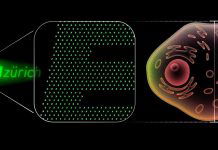
For over two decades, researchers have struggled to improve blue OLEDs—the part of your phone or TV screen responsible for bright, vivid blue colors.
Now, scientists at the University of Michigan have made a major breakthrough.
They’ve designed a blue OLED (organic light-emitting diode) that can last as long and shine as efficiently as its green and red counterparts. This discovery could lead to even more energy-efficient displays in the future.
OLED screens are known for their excellent picture quality and low power use. Unlike older screens that need a backlight, OLEDs emit their own light, which allows for deeper blacks and brighter colors.
However, not all OLED colors perform equally. Red and green OLEDs already use a highly efficient method called phosphorescence, which produces almost one light particle (photon) for every electron used.
Blue OLEDs, on the other hand, have lagged behind, using a less efficient process called fluorescence, and wearing out faster.
The problem is that blue light is high energy. This means that the molecules producing blue light must handle more stress, and if that energy isn’t released properly, it can damage the materials inside the OLED.
In past work, Professor Stephen Forrest and his team found a way to help blue OLEDs get rid of that energy more quickly.
They did this by adding a coating on the negative electrode, allowing trapped energy to be released as blue light more easily. It’s like creating an “express lane” for energy inside the device, preventing damaging traffic jams of energy particles.
The science behind it involves something called an exciton—a pair formed when an electron jumps to a higher energy level, leaving behind a “hole.” When this exciton relaxes back to its original state, it ideally emits a photon.
But in blue phosphorescent OLEDs, this process is slow and tricky.
By placing the excitons close to shiny metal surfaces inside the device, the researchers took advantage of special ripples called surface plasmons. These ripples help convert exciton energy into blue light more quickly.
To make this work even better, the team added a thin carbon-based layer that encourages energy to move in the right direction.
They also used a structure called a tandem OLED, which splits the work between two light-emitting layers, helping prevent wear and tear. Finally, they shaped the entire structure so that blue light bounces between mirror-like layers, enhancing the output and shifting it deeper into the blue color range.
The result is a blue OLED that can finally compete with green and red in both brightness and lifespan.
While it may take time before this technology appears in commercial devices, the path forward is now clear—and the future for OLED displays just got a lot brighter.



